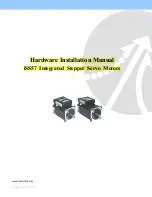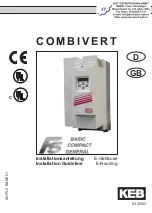
1
WARNING: Because of the possible danger to persons(s) or
property from accidents which may result from the improper
use of products, it is important that correct procedures be
followed. Products must be used in accordance catalog.
Proper installation, maintenance and operation procedures
must be observed. The instructions in the instruction
manuals must be followed. Inspections should be made
as necessary to assure safe operation under prevailing
conditions. Proper guards and other suitable provided, and
are neither provided by Baldor Electric Company nor are
the responsibility of Baldor Electric Company. This unit and
its associated equipment must be installed, adjusted and
maintained by construction and operation of all equipment
in the system and the potential hazards involved. When risk
to persons or property may be involved, a holding device
must be an integral part of the driven equipment beyond the
speed reducer output shaft.
DESCRIPTION
FLEXIDYNE dry fluid couplings and drives are unique concepts
to provide soft start and momentary overload protection for all
types of driven equipment. Standard EMAB motors with RPM
base speeds of 1750, 1160 or 860 are commonly used with a
FLEXIDYNE coupling or drive, yet other available power sources
may be used with the FLEXIDYNE mechanism.
The dry "fluid" in the FLEXIDYNE housing is heat treated steel
shot. A measured amount, referred to as flow charge, is added
into a housing which has been keyed to the motor shaft. When
the motor is started, centrifugal force throws the flow charge to
the perimeter of the housing, packs it between the housing and
the rotor which in turn transmits power to the load.
After the starting period of slippage between housing and rotor
the two become locked together and achieve full load speed,
operating without slip and with 100% efficiency.
Consequently, the motor accelerates instantly to base speed,
while the load starts gradually and smoothly.
Housing
Flow Charge
Output
Shaft
Rotor
Flexible
Coupling
Motor
Shaft
Rotor
Output
Sheave
Motor
Shaft
Flow Charge
Housing
Coupling
Drives
Figure 1 - Housing cross section
INSTALLATION
COUPLINGS:
Install coupling flange on motor shaft and drive housing
mechanism on driven shaft in accordance with the instruction
manual for the Taper-Lock® bushings.
NOTE: The coupling flange must be mounted on motor
shaft (not driven shaft) to allow proper operation of the
FLEXIDYNE coupling.
Shaft ends must not protrude beyond bushing ends. Install
coupling disc over pins on drive housing mechanism. Position
the motor and the driven unit so that the spacer buttons on the
coupling disc slightly contact the coupling flange. Reference
Dimension A on Parts Replacement Drawing.
(A = 5/8” on size 70C; A = 3/4” on size 75C)
For longest FLEXIDYNE coupling life, it is always desirable to align
coupling as accurately as possible at initial installation. Check
alignment by laying a straight edge across the coupling flange
and drive housing at several points around the circumference.
NOTE: Driven shaft must not touch housing hub.
DRIVES:
Install the FLEXIDYNE special bolt-on sheave on the driven hub.
Use screws and lock washers provided with the FLEXIDYNE
drive. Torque screws to 160 inch-pounds.
Stake motor shaft key in place and slide FLEXIDYNE drive onto
the motor shaft, with collar as close to the motor as possible.
Tighten key set screw securely against motor shaft key. Tighten
shaft set screw securely against motor shaft.
NOTE: The sheave is the output of the FLEXIDYNE drive, do
not input power to the FLEXIDYNE drive through the sheave.
In other words, do not mount the FLEXIDYNE drive on the
driven shaft.
Instruction Manual for 70C, 70D 75C and 75D
FLEXIDYNE
®
Couplings and Drives
These instructions must be read thoroughly before installing or operating this product.


























